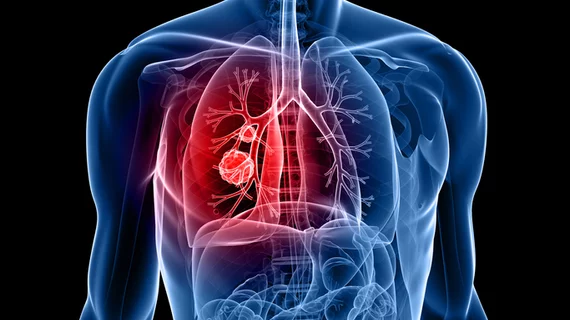How effective are guidelines for managing incidental pulmonary nodules spotted on CT?
Experts recently evaluated the effectiveness of the Fleischner Society Guideline Recommendations in limiting unnecessary imaging and procedures for incidentally detected pulmonary nodules.
The authors of the study hypothesized that they would find malalignments due to the nature of how the 2017 Fleischner Society guidelines, in that they do not pertain to incidentally detected nodules.
“We examined the frequency of alignment between Fleischner Society goals and recommendations hypothesizing that there would be malalignment because the Fleischner Society extrapolated the probability of lung cancer from individuals with screen-detected nodules to inform their recommendations,” corresponding author Farhood Farjah, MD, MPH, of the Department of Surgery at the University of Washington in Seattle, and co-authors explained in the Journal of the American College of Radiology paper.
The guidelines suggest that patients with less than 1% probability of developing cancer do not merit additional evaluations, and that those with ≥1% probability should undergo further testing. Based on that, the experts evaluated the incidentally detected solid lung nodules of 5,444 individuals. The Fleischner Society guidelines were used to define strata based on the patients’ smoking history, the size of the nodules and the number of nodules visualized on CT. Outcomes were measured based on lung cancer diagnoses within two years of nodule(s) detection.
A total of 214 patients received a lung cancer diagnosis within 2 years of nodule detection. For 194 of these cases, the goals and outcomes of the Fleischner Society were in alignment. However, for the entire cohort alignment was 51% and indeterminate in 49% of cases.
The authors concluded that although in 91% of cases the use of the guidelines “achieve their implicit goal of recommending further diagnostic evaluations for individuals the society considers high risk for lung cancer,” questions of effectiveness remain for patients not considered at high risk.
The authors suggested that if the explicit goal is to avoid unnecessary additional evaluations for low-risk patients, their findings are indeterminate. Among the possible solutions for this would be for radiologists to include information about patients’ risks in more enhanced radiology reports that reference the guidelines, which could assist clinicians in the management of incidental findings, the authors concluded.
The study abstract can be viewed here.

